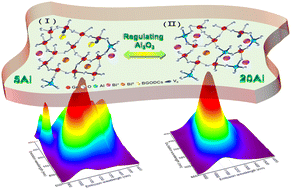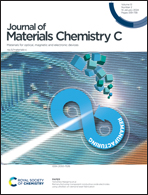Tunable ultra-broadband multi-band NIR emission in Bi-doped aluminogermanate glasses and fibers via controllable Al2O3 content for broadband amplifiers
Abstract
Bismuth (Bi)-doped glasses with broadband near-infrared (NIR) emission have been drawing increasing interest due to their potential applications in tunable fiber lasers and broadband optical amplifiers. Yet, the realization of highly efficient and ultra-broadband Bi NIR emission covering the whole telecommunication window remains a daunting challenge. Here, via rationally controlling the content of Al2O3 to control the local environment and structural defect states around the Bi NIR active centers (BACs), various luminescence centers can coexist stably in a glass matrix. Consequently, tunable ultra-broadband multi-band NIR emission with four emission bands at ∼924, ∼1154, ∼1265, and ∼1516 nm was achieved in a Bi-doped germanate glass under single wavelength excitation. More importantly, such ultra-broadband multi-band Bi NIR emission with excellent thermal stability can be well retained after the glass was drawn into an optical fiber by a rod-in-tube method. The fibers show an obvious broadband ASE spectrum spanning a range of 1000–1600 nm. This work is helpful for understanding the mechanism of Bi NIR emission and offers a simple and feasible method for developing novel photonic devices with ultra-broadband Bi NIR emission.

- This article is part of the themed collection: Journal of Materials Chemistry C HOT Papers


 Please wait while we load your content...
Please wait while we load your content...